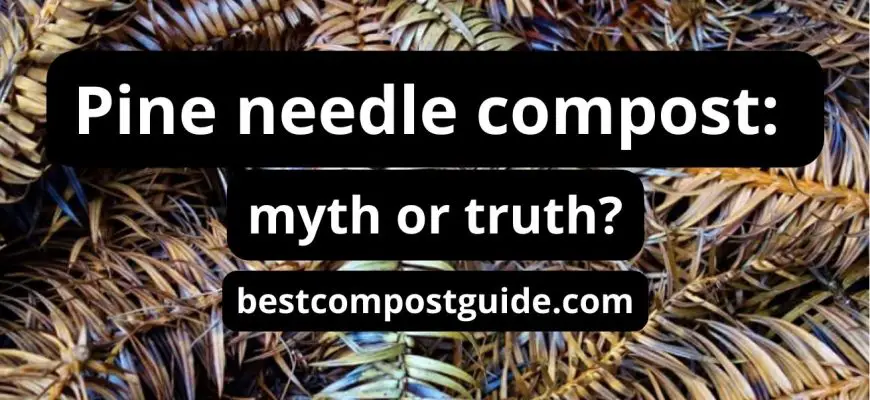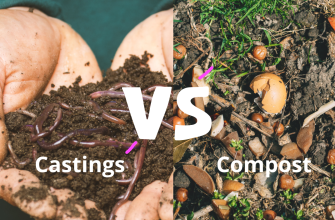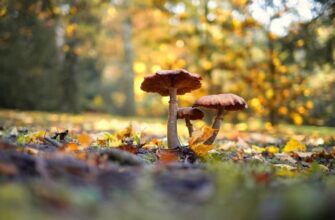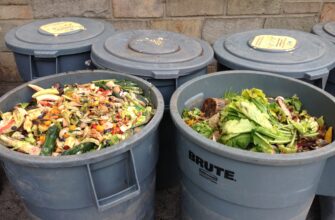Pines are magnificent: majestic and beautiful, they aren’t only a delight to look at, but they also provide all kinds of necessary things for humanity. We use their trunks, their bark, pine cones, and even their needles to find a way to be useful.
How about using them in compost? Can even old pine needles fallen from the trees be valuable too? Let’s find out.
Pine needle compost is not a myth. Pine needles are a substantial source of essential nutrients that your garden plants will gain.

If you have lots of pine trees in the neighborhood, you may as well utilize this practical closeness to your advantage and use aged pine needles covering the forest floor for adding to the compost heap.
However, when considering composting pine needles, we should take into account one significant factor — acidity. Most plants (with exceptions, of course) prefer their soil in the pH-neutral range, which means around 7, whereas the maximum level is 14 and the minimum — 1. Pine needles will move the pH of the soil to the acidic end, as their pH is about 3.5.
The conclusion is: depending on the environment you intend to create to provide your plants with more acidic or alkaline soil (there are fans of that kind of soil, too), your pine needle compost should contain a higher or lower ratio of pine needles themselves.
Normally, gardeners add pine needles in the amount of 10% of the total quantity of the compost heap.
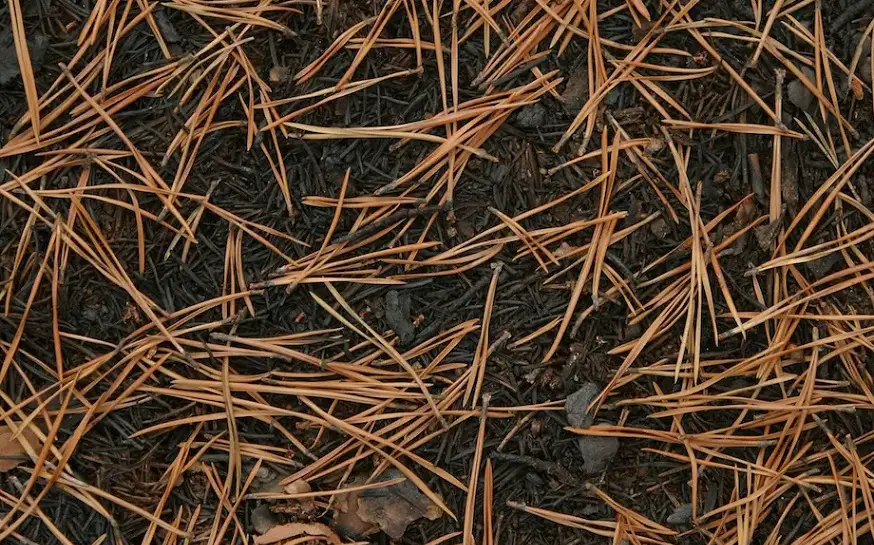
However, it’s worth noting that whereas fresh needles are highly acidic with the aforementioned pH level of 3.5, the aged pine needles have a lower level of acidity. That’s the reason these pine needles are recommended for the composting process.
We suggest starting with pine needles themselves, their nature, and how we can utilize them in the most efficient way.
- Pine needles and their applications
- Proper compost
- Best way to compost pine needles
- Maintaining a neutral pH level
- Composting pine needles: pros and cons
- Pros
- Cons
- Final thoughts
- Frequently asked questions
- Are pine needles good in compost?
- How long does it take pine needles to compost?
- Are pine needles good for a vegetable garden?
- Are pine needles carbon or nitrogen compost
Pine needles and their applications
As you probably know, pine needles are none other than transformed leaves, which are shaped this way to conserve as much water as possible.
Pine needles (as well as the needles of other evergreens) secure a 6-8 times lower evaporation compared to normal leaves. Pine needles grow in fascicles, and each fascicle contains several needles, whose number may vary.
Pine needles may grow to different lengths depending on the pine type. Longleaf pines have excessive leaves reaching 18 inches in length, whereas foxtail pines proudly wear their one-inch needles. That’s one of the ways, pine trees adjusted to their various habitats.
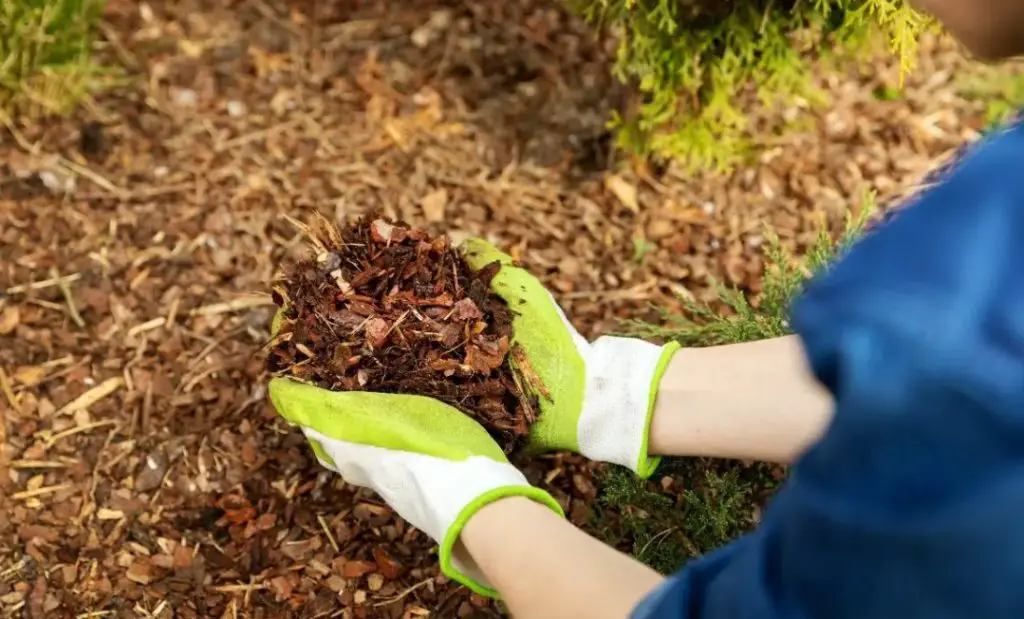
No matter the type, pine needles have a protective waxy coating keeping them safe from the elements. A pine tree can grow in a boreal forest as well as in a tropical environment.
Pine needles are effective sunlight collectors. Chlorophyll in their cells captures the sun’s energy, securing the sustenance for the species.
As we’ve already noted, the fresh pine needles are highly acidic. They will shift the pH level of compost closer to their level for a period. However, with pine needle decomposition, the acidity level will diminish, reaching a neutral number by the end of composting pine needles.
We should also add that apart from pine needle compost, these little things have various applications.
They can contribute to rustic and stylish decor, especially with a Christmas theme. The enticing fragrance of pine needles brings the feeling of a fresh green forest into the house. Wreaths, potpourri, and various craftworks with pine needles can make your house cozy and inviting.
At the same time, pine needles can have practical applications as well. They make a great mulch, which looks authentic, prevents weed growth, and serves as an adjuster for water and temperature levels of the soil.

Adding pine needles to your garden is a great way to make it attractive for birds and small animals. This is their natural material for building nests and bedding. So if you’d like to create a safe haven for the wildlife in your area, using pine needles is a way to go.
Proper compost
When we enrich garden soil with compost, we need to make sure that the said enrichment is delivered. How do we make a proper compost?
How do we arrange a compost bin so that its filling is transformed into a substance with a high nutrient content?
There are 3 major elements contributing to the quality compost:
- The decomposing ingredients should be provided with proper oxygenation so that the bacteria working on the compost can get enough oxygen to perform.
- Providing enough moisture to sustain the microorganism involved in the composting process is critical, too.
- Organic materials in the compost bin should contain brown and green materials. Brown materials are responsible for the future compost structure. Their carbon level is greater, and the decomposition period — longer. Whereas, greens are rich in nitrogen and moisture and have a shorter decomposition period.
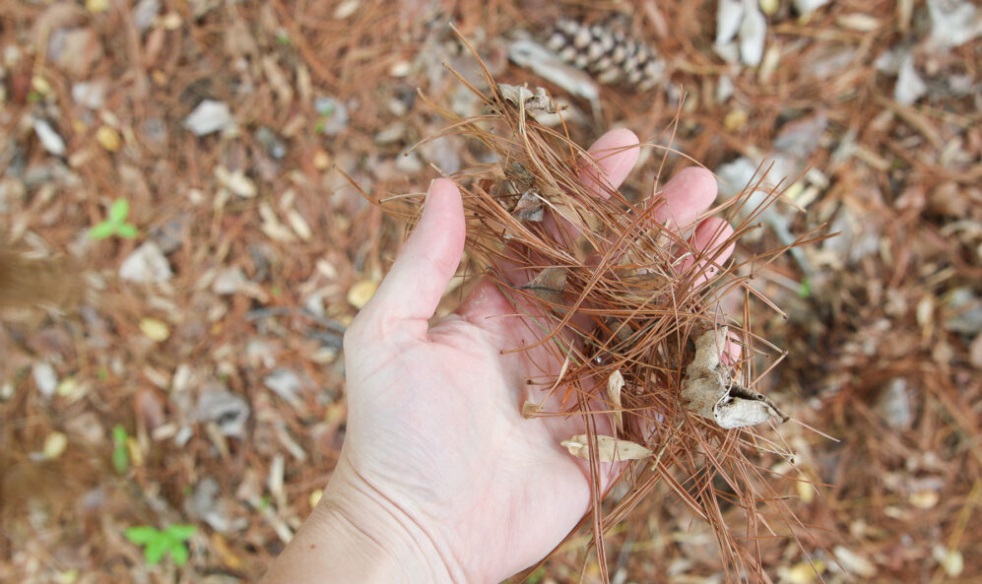
Pine needle compost does not contain only pine needles. Their moisture level is relatively low, and they consist mostly of brown feedstock. But at the same time, the amount of nutrients they can provide for the garden soil is worth including in the compost heap.
Best way to compost pine needles
Here’s our guideline for you to follow and secure a balanced pine needle compost for your beloved garden:
- Sort and break. Make sure there are no strange objects among the pine needles, like dog droppings or random metal pieces. Then shred them. You can use a lawn mower for that, fixing a bag to it for picking the pine needles.When pine needles break, we destroy their waxy coating, thus shortening the decomposition period for the materials. It’s still better to use aged needles, as they decompose faster anyway.
- Create a multi-tiered structure. Your composition should have 2 tiers used in turn: greens and browns, where greens are fresh grass stems, fruit and vegetables remaining from the kitchen, or manure. The browns will be pine needles in our case. The brown tiers should be twice as thick compared to the green tiers.Put the brown tier on the bottom of the compost bin and go from there. We suggest finishing with a green tier. Then we recommend topping it with some soil for the perfect environment (warm and humid) for the bacteria’s best performance.
- Secure proper humidity and warmth. This is important, especially if you are on a schedule. Maintaining the temperature and humidity level ideal for decomposing will compost pine needles and other ingredients of your compost pile in the shortest time possible.All materials, including pine needles, decompose best at temperatures between 115 °F and 140 °F. Lower temperatures will slow down the composting process. If it’s unacceptable to you, add pine needles and other composting materials, and the process will speed up again.To maintain an ideal level of water in the composting pile, supply water from time to time aiming at a dewy sponge texture. But make sure you don’t overdo it. Another way to provide moisture to the compost pile is by adding some greens which contain plenty of moisture.

Maintaining a neutral pH level
If you opt for a pH-neutral environment for the compost composition, you have to find ways to balance the acidic and alkaline elements of it.
Pine needles in compost will give a slight rise in the acidic level. Although, after a complete decomposition, even fresh pine needles will have their acidity significantly reduced.
It’s all about balance. The same way you compost pine needles, mixing them with other organic materials and creating the compost which complies with all the requirements for a perfect growing medium.
Here, you will compensate a component with a higher acidic level with a component with a higher alkaline level. That will result in a perfectly balanced substance, which you will use as compost for the garden.
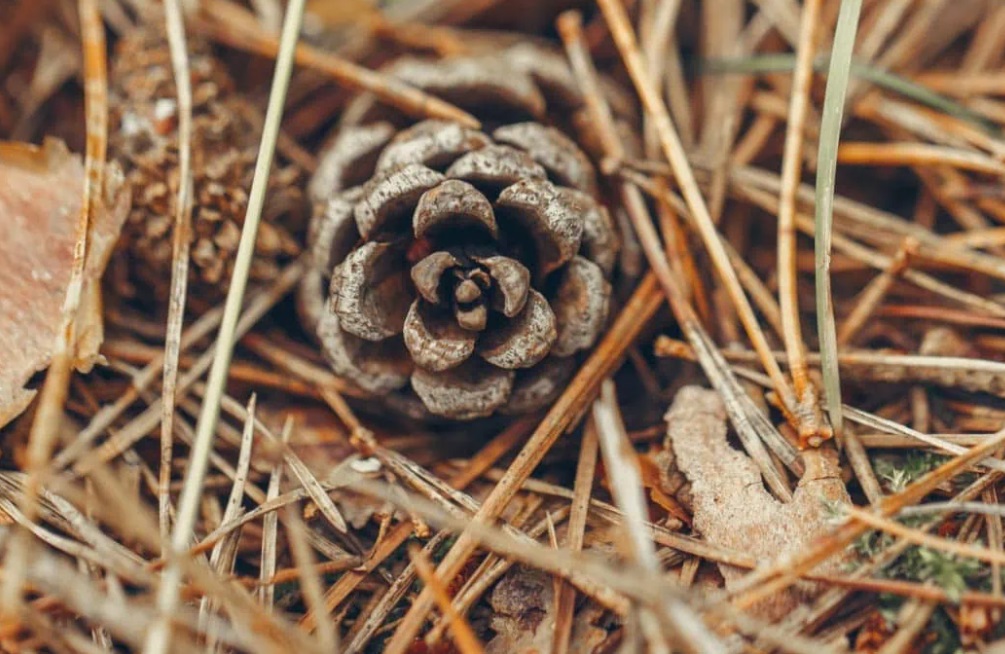
If you compost pine needles in a significant amount, don’t add any more acidic elements. Try to limit them and add some pH-neutral organic materials like wood, straws, or sawdust.
Don’t forget to mix the compost pile from time to time. This way, the ingredients will integrate better and lead to a well-balanced compost.
Monitor the process by checking the pH level of the future compost. Using pine needles in your compost makes it critical to observe the pH level decrease while the pine needles decompose.
A pH monitor will come in very handy and do the job. When the pH level reaches 6, you are in the ideal brackets.
A lower pH level may be a sign that you need to add some alkaline-containing materials. Lime is alkaline, as well as eggshells and paper.

Composting pine needles: pros and cons
If you are thinking of adding pine needles to the compost pile, you need all the data, good or bad, to decide if you want to compost pine needles. Here come the pros and cons:
Pros
- Pine needles are an impressive source of nutrients, nitrogen, in particular, critical for the plant growth
- Pine needles secure the carbonization of the compost, which lets the soil ‘breathe’ and makes it lighter
- Making your own compost pile by composting pine needles and yard waste is sustainable, and using the waste to create compost, thus closing the cycle and protecting the environment, is commendable
Cons
- Pine needles break slowly, so their decomposing is quite lengthy (especially fresh pine needles, they take about five weeks to decompose or longer)
- The acidic nature of pine needles calls for the cautious addition of these ingredients into the compost to avoid acidic soil
- If collected close to highways or public places, they can cause infestation
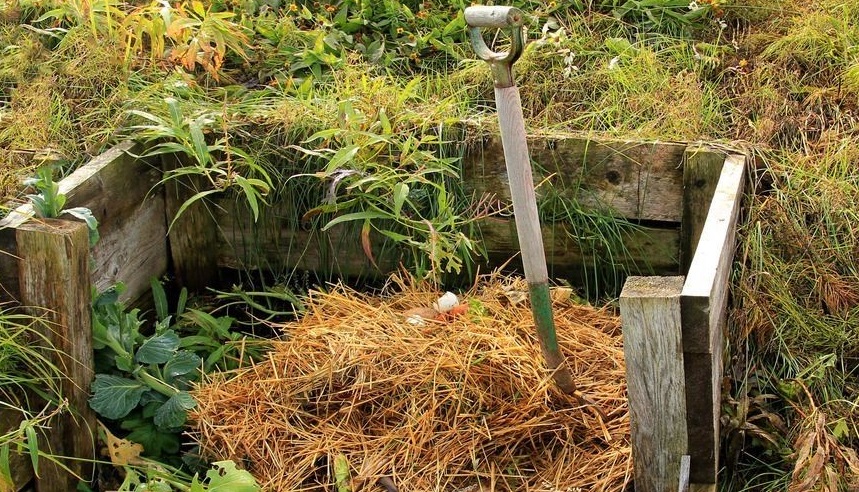
As you can see, if you want to take advantage of the pros and avoid the cons, you just need to be sensible in organizing the composting process. Your compost bin will gift you with a perfect growing medium that will make your garden thrive.
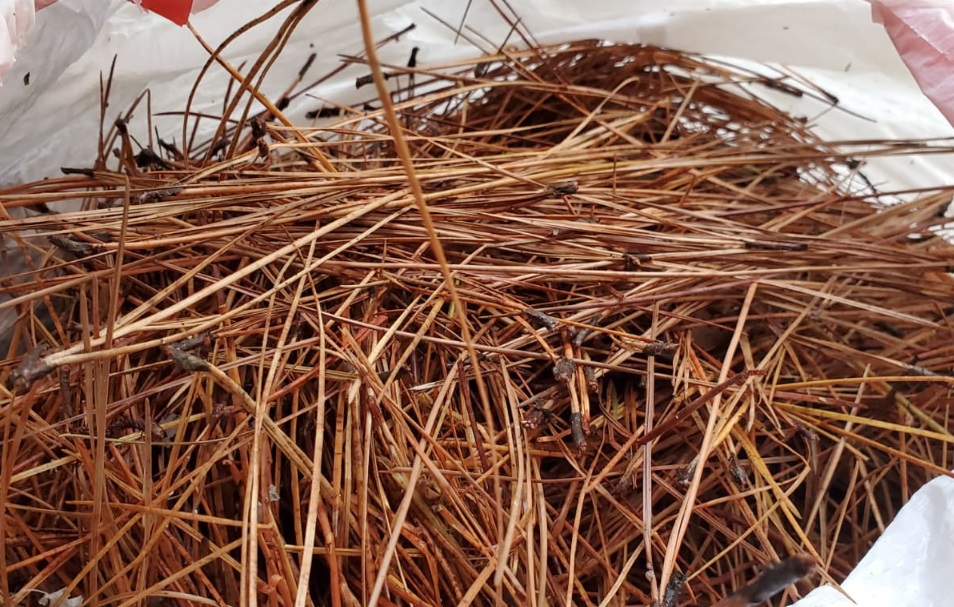
Final thoughts
In conclusion, pine needles embody a smart and sensible idea for composting. They are easy to find, and they are rich in nitrogen and other components that will ensure that your garden inhabitants will thrive.
Composting pine needles is not a very short process, but if you collect old needles instead of fresh ones, it will take less time. They will even make your compost pile smell nice… which is not something we should brush off either.
We recommend composting pine needles and wish you every success in this endeavor.
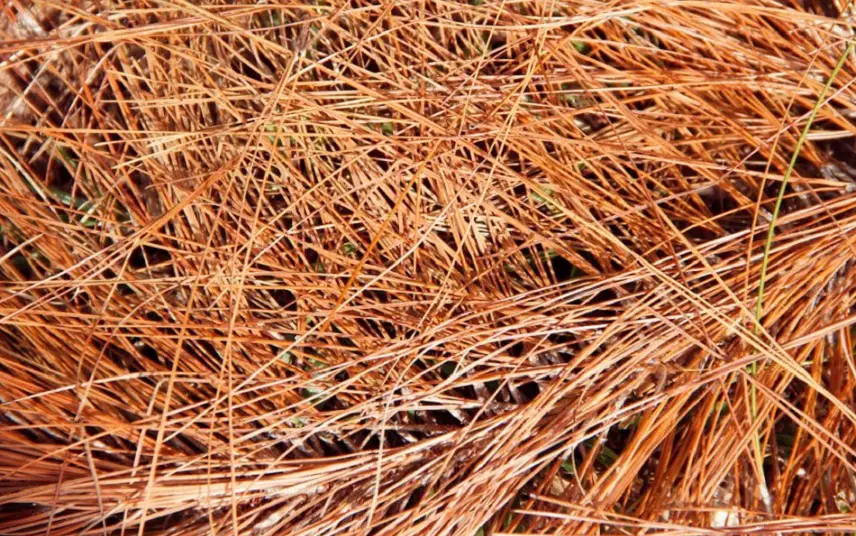
Frequently asked questions
Are pine needles good in compost?
Pine needles can be useful as part of the compost pile as a source of important nutrients. But beware: due to the acidic nature of the pine needles, they should not constitute more than 10% of the total amount of compost.
How long does it take pine needles to compost?
It depends if the pine needles are fresh or old. Fresh needles usually take 6 weeks to decompose, whereas the aged ones — 3 weeks.
Are pine needles good for a vegetable garden?
Pine needles are good as part of the compost for a vegetable garden because they contain a significant amount of nitrogen, which is critical for the plants’ successful growth.
Are pine needles carbon or nitrogen compost
Pine needles provide both carbon and nitrogen for the plants in the garden, which makes them a useful component of the compost pile.

